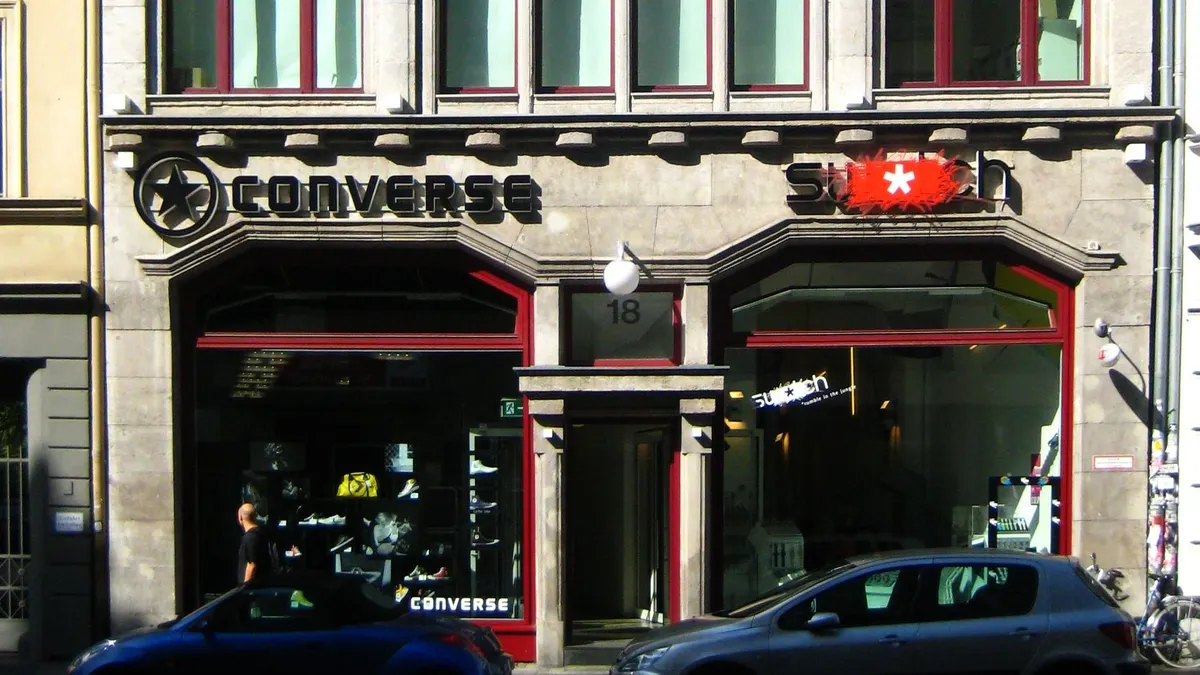Wal-Mart launched the retail holiday season, 2015 edition, Nov. 1, with most of its efforts, even its most impressive digital features, apparently geared to get people into its stores.
Wal-Mart is hardly the only retailer to start things off the day after Halloween. Target, Starbucks, Amazon, and a host of others have already ignited discounts, decked out shelves, hung decorations, issued special holiday-edition cups, toys, and flavors, and have holiday supplies for sale.
Since around then, Wal-Mart U.S. COO Judith McKenna has told several news outlets about the retailer’s plans to outfit stores for the holidays in grand style.
“I want customers to be in awe when they see what we have to offer as they walk into our stores or click around our site,” McKenna wrote Oct. 29 on the company’s blog. “Our managers have made a lot of progress to improve the shopping experience before the holidays and our merchants made sure we have the right products in stock. We’re delivering the prices customers expect, but we’ve taken it up a notch. Our Supercenters, Neighborhood Markets and Walmart.com will be a powerful combination for customers this holiday season.”
And then she adds for good measure: “ Trust me.”
Great ideas — everywhere
Wal-Mart is leaving little to chance this holiday season, at least when it comes to its physical stores, saying it will be dispatching Santa to some 3,600 Wal-Mart Supercenters on the weekends of Dec. 4-5 and 12-13, amid other holiday sprucing.
The company's employment of Santa in so many stores for so many days is probably wise, and definitely an advantage it has over Amazon. Half of shoppers with children 13 years old or younger will go to the mall just to visit Santa, according to new research from the International Council of Shopping Centers.
"Wal-Mart is starting to feel the customer attrition to Amazon, which doesn't have the huge overheads that Wal-Mart does,” Hitha Herzog, chief research officer at H Squared Research, told NBC News. “And even though it's a gimmick, Santa always results in more foot traffic. Any time you give people a reason to come to the store other than, for example, to buy a television, it's always going to be a draw. When you have someone stay within the confines of your store for a longer time, the percentage of purchases can increase tenfold.”
In fact, the problem with the strategy is not that it’s ineffective, but that malls and other retailers are also planning to increase their invites to — and from — Santa. After some lean times for mall Santas during and after the recession, the practice is picking up, in some cases with elaborate set-ups in malls including "Elfie Selfie" stations and digital installations, reports Ad Week.
Emphasis on stores
There’s good reason for Wal-Mart to put so much emphasis on getting people into stores as early and as often as possible this season. Its e-commerce makes for just 3% of its sales, but it runs more than 4,600 U.S. stores, plus more than 650 Sam’s Club warehouse stores.
Jason Goldberg, VP of commerce at digital marketing firm Razorfish and blogger at the Retail Geek, says that much of Wal-Mart’s omnichannel efforts are actually aimed at getting people to go to its stores or to spend more time at its stores, at least as much as to boost its web sales.
“Wal-Mart wants to get customers to those stores and get them to spend more money there,” he told Retail Dive. “It’s not a sexy way to compete, but it's the primary way that Wal-Mart is competing.”
But many Wall Street analysts, not to mention customers, have noticed that many of Wal-Mart’s store fleet are a bit worse for the wear, something that Wal-Mart’s U.S. CEO Greg Foran admitted himself this summer.
“If we look at what customers say about our business, about half of [stores] are where we would want them to be, and the other half need improvement,” Foran told Fortune magazine in June.
But even half of 4,600 is still a lot of stores. And, even though tinsel, fake snow, smiling staff, Santa, ringing bells and tasty treats — all of which Wal-Mart is promising at the holidays —can go far in hiding the disarray in many of them, none of that can make up for missing items and other inventory problems the retailer also suffers from.
Digital efforts
As noted by Goldberg, many, if not most, of Wal-Mart’s digital and omnichannel efforts are aimed at getting shoppers into stores. For Wal-Mart’s expanded buy online, pickup in store option, its mobile app now has a check-in feature to let the store know they’re almost there to pickup an order, and the stores themselves have improved signs to guide customers to the pickup area.
The app also facilitates access to a customer’s own wish list, or the wish list of someone on their list.
“Our customers are looking for great deals no matter how they shop with us – whether in store, online or on their mobile device,” Walmart.com’s president-CEO Fernando Madeira said in a statement. “We’re building digital capabilities so it’s faster and easier for them to find the right items at the right prices, and get them delivered quickly to their door or to a store.”
“Always low prices”
It isn’t the holidays—and it isn’t Wal-Mart—if there’s no special price tag attached to key merchandise. Wal-Mart last week unveiled a holiday strategy that includes price breaks on merchandise from toys to electronics lasting far longer than the Black Friday weekend. In fact, the “rollbacks” began Nov. 1 and will last at least 90 days, the retailer says.
Curiously, though, in an odd stance for a company seeking to steal some holiday spirit from Amazon (and famous for its price wars), Wal-Mart is bucking the trend by not rolling back its free shipping minimum, instead requiring online customers to spend the usual $50 for the perk.
That could be a big mistake, considering that holiday shoppers browsing online will enjoy holiday-time free shipping with no such minimums from Target, Best Buy, Amazon, and others, starting now.
“Walmart’s value proposition with respect to price, shipping and delivery time is not as compelling as Amazon’s,” Richard Church, a retail analyst for Discern Investment Analytics, told the New York Post.



















